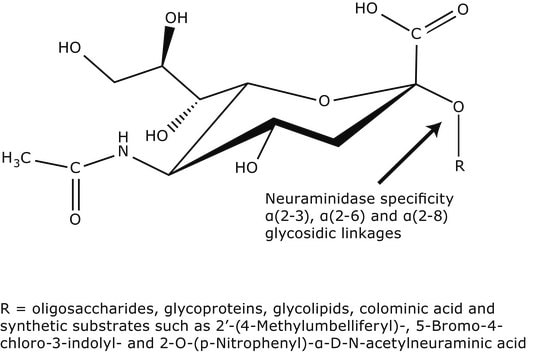10269611001
Roche
Neuraminidase (Sialidase)
from Arthrobacter ureafaciens
Synonym(s):
PCR, taq
About This Item
Recommended Products
biological source
bacterial (Arthrobacter ureafaciens)
Quality Level
form
solution
specific activity
~25 units/mg protein
packaging
pkg of 1 U (100 μl)
manufacturer/tradename
Roche
optimum pH
5.0-5.5
storage temp.
2-8°C
General description
Specificity
Application
- cell surface lectin array analysis.
- hemagglutination assays.
- cell adhesion assay.
- detection of the cell surface glycosylations in human anaplastic large cell lymphoma cells
- release of sialic acid from cells
- antibody-overlay lectin microarray
Physical properties
Physical form
Preparation Note
Other Notes
Signal Word
Warning
Hazard Statements
Precautionary Statements
Hazard Classifications
Skin Sens. 1
WGK
nwg
Flash Point(F)
does not flash
Flash Point(C)
does not flash
Certificates of Analysis (COA)
Search for Certificates of Analysis (COA) by entering the products Lot/Batch Number. Lot and Batch Numbers can be found on a product’s label following the words ‘Lot’ or ‘Batch’.
Already Own This Product?
Find documentation for the products that you have recently purchased in the Document Library.
Customers Also Viewed
Protocols
Neuraminidase can be used to cleave sialic acids from proteins. In this protocol, the enzyme from Vibrio cholerae is used on fixed cells.
Our team of scientists has experience in all areas of research including Life Science, Material Science, Chemical Synthesis, Chromatography, Analytical and many others.
Contact Technical Service







